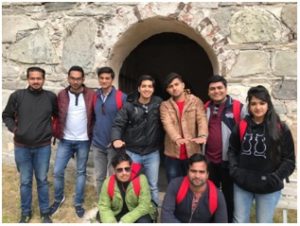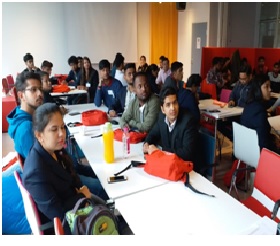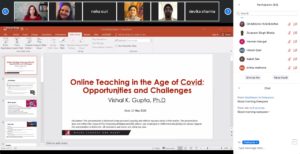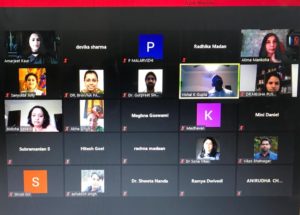As I sat one night brainstorming ways to do justice to this blog and introduce myself to the world of sharing musings, I channeled all of my love for psychology into a “personality type” format to kick off my journaling. I recently took the popular ’16 personality’ test online to amuse myself. It is an adaptation of the theory of psychological personality types produced by Carl Jung. It is based on 16 personality types, which Jung viewed as stereotypes. At the heart of Myers – Briggs theory are four spectrum on which one can be positioned, forming their unique personality. These are:
- People and things (Extroversion “E”), versus ideas and information (Introversion “I”).
- Facts and reality (Sensing “S”), versus possibilities and potential (Intuition “N”).
- Logic and truth (Thinking “T”), versus values and relationships (Feeling “F”).
- A lifestyle that is well-structured (Judgment “J”), versus one that goes with the flow (Perception/ Prospecting “P”)While at first I struggled with how definitive it seemed in its diagnosis and how online “personality tests” can often seem like you are reading a horoscope, I decided to be less skeptical and introspect. Isn’t it my life experiences that make me who I am? How do they put together all of my essence into this succinct format?
ENFPs’ (like myself) are invigorating, independent and socially adept at navigating our worlds using an enthusiasm for exploration. This has been true for every aspect of my life. My self-esteem is driven by my ability to produce original content and come up with creative solutions. I’m inherently curious, which leaves me longing for life-changing experiences.
During my childhood, I discovered my need for social interactions and exploration. The first pillar of my personality, extroversion (E) shone through in my formative years.
I struggled with learning disabilities and dexterity problems as a child. Focusing in class was an uphill battle and I could be easily distracted; I found it difficult to cope with classwork and homework, and was left to deal with the same largely undiagnosed.
Despite my struggle with academics, it didn’t hinder me from pursuing extracurricular hobbies and I focused on being a complete people’s person. All of my parents ‘couple’ friends together provided a strong childhood friends circle that I carry along with me even now, forming a family-like bond making me learn to express myself through my friendships.
In lieu of my prospecting nature comes my passion: Psychology. The world is my playground, and I intend to explore every inch of it! My intuitive (N) side thrives while discovering the beauty of the world around us. I tend to see life as a big, complex puzzle where everything is connected, through a prism of emotion, compassion, and mysticism, constantly seeking deeper meaning.
On the other hand, that same intuition has a darker side, which shows in my low score of (P). I often deal with anxiety for a multitude of reasons, some of which are hard to admit. While I love social interaction, it can leave me caring too much about what other people think of me. Sometimes I get too hung up on the smaller details and fail to see the bigger picture and my overthinking takes over all else. Although, my flaws are a part of who I am. My anxiety makes me sensitive, it drives me to be a perfectionist and want to improve constantly. I give my all to anything I put my heart to, and for that, I am thankful.
Lastly, my feeling (F) side is evident in all my interpersonal relationships ,and brings out all the other factors of my personality even more, especially with my family.
My parents voracious and infectious energies have given me an immense passion that I carry on within me (and it even sometimes drives my sister and me up the wall). I have always been in admiration of how they brought us up, constantly learning from their creative parenting. Our home has always been a very open and progressive household, sharing feelings, thoughts, and ideas every step of the way. No topic has been out of bounds, no conversation that couldn’t be shared among us four. Anything and everything was open to debate and all our voices rang loud and clear. There’s ‘never a dull day’ in the “Suri household”.
Another central aspect of my life is my very loving husband. We traveled together in the same school bus, and like most pre-pubescent in 8th grade, we fell head over heels. What one would assume was childish infatuation was anything but that. I’m now married to the same boy who lived down the lane, except now he lives in the same room! We got married very young because we could not be apart any longer and now as of 4 days back, we have even grown as a family with the addition of our tiny 2 month old dalmatian puppies!
Through all my facets of life, I’m ever-changing, but I always choose to live deeply and happily, laughing often, loving always and never looking back. While personality tests may not be the gospel truth, they are a great ally for some reflection into our lives!
















